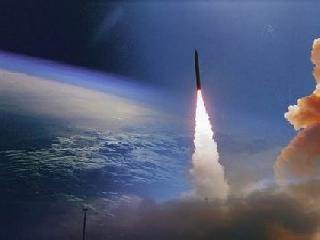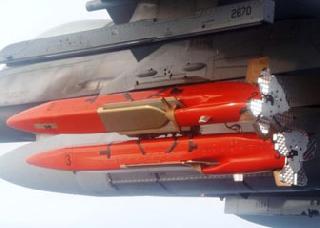Artistic concept of SLS launching. A NASA photo
WASHINGTON (AP): To soar far away from Earth and even on to Mars, NASA has dreamed up the world’s most powerful rocket, a behemoth that borrows from the workhorse liquid-fuel rockets that sent Apollo missions into space four decades ago.
NASA Administrator Charles Bolden and several members of Congress on Wednesday unveiled the Obama administration’s much-delayed general plans for its rocket design, called the Space Launch System.
The multibillion-dollar programme would carry astronauts in a capsule on top, and the first mission would be 10 years off if all goes as planned. Unmanned test launches are expected from Cape Canaveral, Florida, in six years.
Calling it the “largest, most powerful rocket built,” NASA’s exploration and operations chief, William Gerstenmaier, said the rocket will be tough to construct. But when NASA does it, “we’ll have a capability to go beyond low-Earth orbit like no other nation does here on Earth,” he said in a telephone briefing Wednesday.
The rocket resembles those NASA relied on before the space shuttle, but even its smallest early prototype will have 10 percent more thrust than the Saturn V that propelled Apollo astronauts to the Moon. When it is built to its fuller size, it will be 20 percent more powerful, Gerstenmaier said. That bigger version will have the horsepower of 208,000 Corvette engines.
NASA is trying to remain flexible on where it wants to go and when. The space agency is aiming for a nearby asteroid around 2025 and then on to Mars in the 2030s. There could even be a short hop to the Moon, but not as a main goal. All those targets require lots of brute force to escape Earth’s orbit, something astronauts have not done since 1972.
The far-from-finalized price tag may be too steep given federal budget constraints.
The rocket is similar to Apollo not only in size and shape, but in its reliance on liquid fuel. The winged, reusable and recently retired space shuttles sat on top of a giant liquid fuel tank, but relied heavily on twin solid rocket boosters to get off the ground.
NASA figures it will be building and launching about one rocket a year for about 15 years or more in the 2020s and 2030s, according to senior officials. The idea is to launch its first unmanned test flight in 2017 and send up the first crew in 2021, followed by the asteroid and Mars missions.
At first, the 320-foot-tall rockets will be able to carry 77 to 110 tons, which would include the six-person Orion Multi-Purpose Crew Vehicle capsule and more. The crew capsule, which is now being built, has at least twice as much space as the old Apollo capsules, which could only fit three astronauts, said NASA spokesman Michael Braukus.
Eventually the rocket will grow to 400 feet tall, weigh 3,250 tons and be able to carry another 143 tons into space, maybe even 165 tons, the officials who spoke on condition of anonymity said. By comparison, the long-dormant Saturn V booster that sent men to the Moon was able to lift 130 tons.
The plans dwarf the rumbling liftoff power of the space shuttle, which could haul just 27 tons. The biggest current unmanned rocket can carry about 25 tons.
The giant rocket will be powered by liquid hydrogen and liquid oxygen fuel. During the initial test flights, it will use solid rocket boosters designed for the shuttle strapped on its outside, and will have shuttle main engines powering it on the inside. But soon after that the solid rocket boosters will be replaced with new boosters that should have advanced technology and may be either liquid or solid.
 Previous Article
Previous Article Next Article
Next Article












The Indian Air Force, in its flight trials evaluation report submitted before the Defence Ministry l..
view articleAn insight into the Medium Multi-Role Combat Aircraft competition...
view articleSky enthusiasts can now spot the International Space Station (ISS) commanded by Indian-American astr..
view article